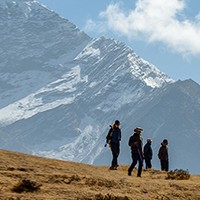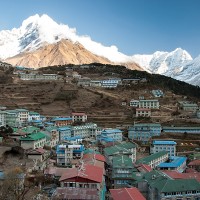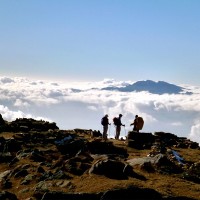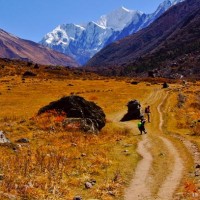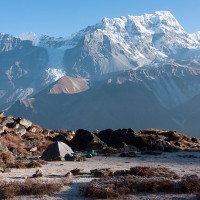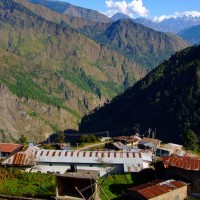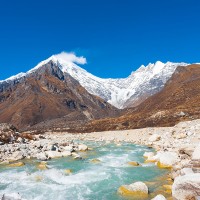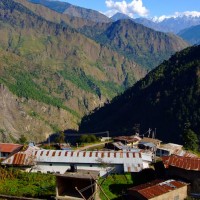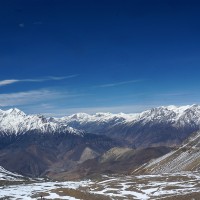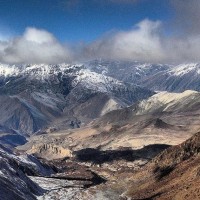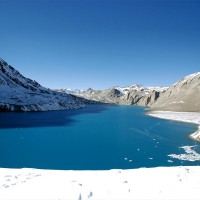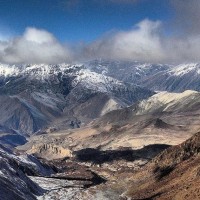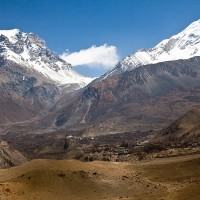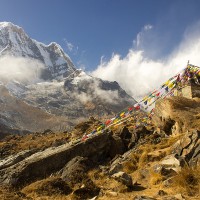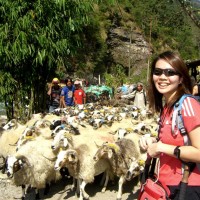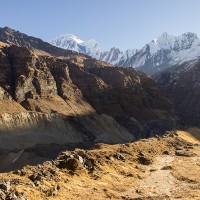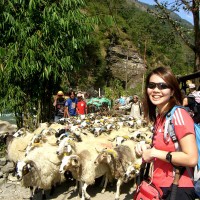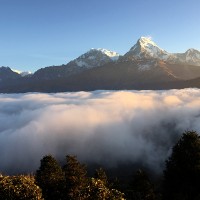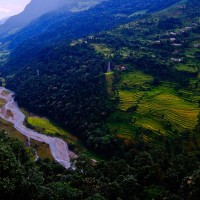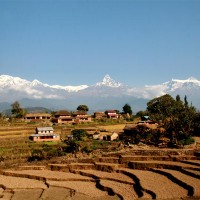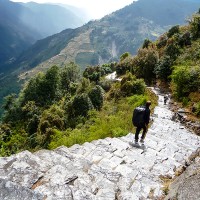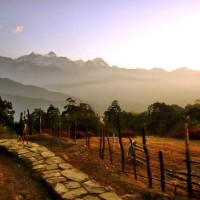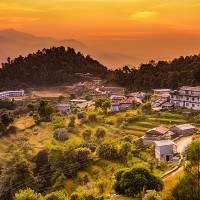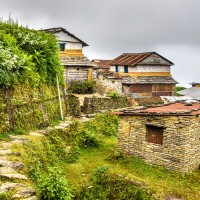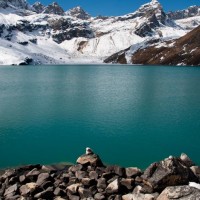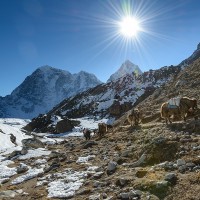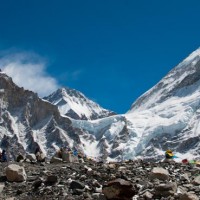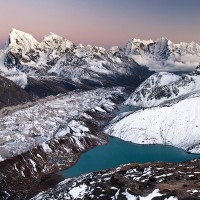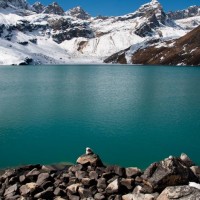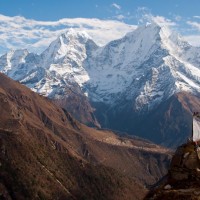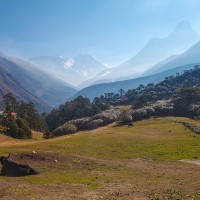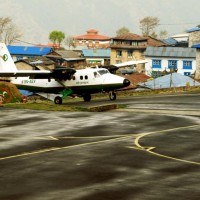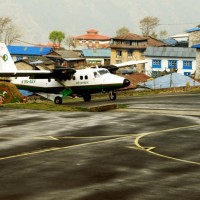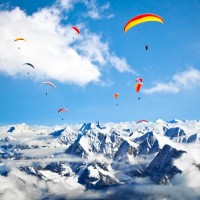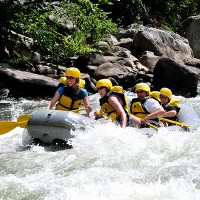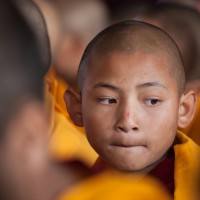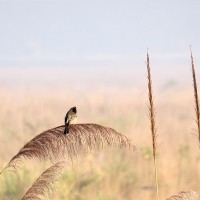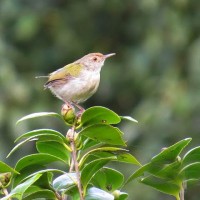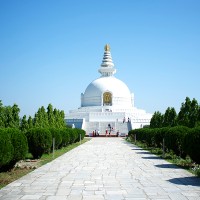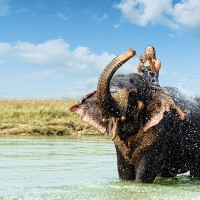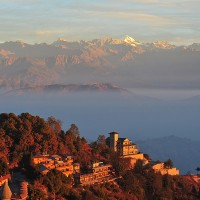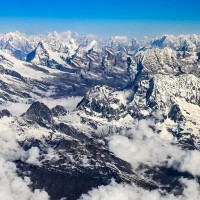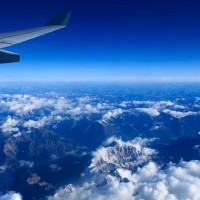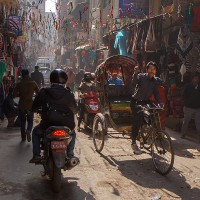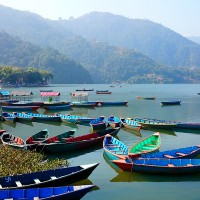Nepal Trekking Information
Overview
Trekking refers to multi-day hiking trips through rural, often rugged territory. It tends to be less-structured than other sort of travel, as weather conditions and topography help influence travel plans more than plane flights or hotel availability. In contrary to general perception that trekking is a hard-core outdoor activity, it is actually an activity that can be enjoyed by all ages. In our terms, trekking simply refers to walking on trails and sometimes stoney steps in a natural environment. You can be a novice with no trekking experience but have a desire to trek or you are an experienced mountain walker looking for wider options. Ascending the heights and being a part of the Himalayan landscape is an experience beyond comparison. Above all, trekking in the Himalaya is often a mix of adventure, pleasure and self realisation.
At Divine International, you will be spoilt for choice in our wide variety of trekking packages. Our treks in Himalayas range from easy adventures for the family to strenuous ones for those seeking high adventure! On our treks and climbs, we have very skilled and experienced guides who will take care of you every step of the way. More often than not, trekkers return yearning for more adventure and looking forward to their next trip!

A Typical Day in the Trek
At dawn, the Divine International crew wakes you up and offer a cup of warm tea with a smile. After freshening and finishing the tea, you will have hearty breakfast before setting off. At the right moment, you pack our bags and assemble in the dining hall before setting off on the day’s trek. After approximately 2-3 hours of trekking the group take a break for lunch somewhere in the trail. After a relaxing lunch, you will typically spend around 2-3 hours or even more sometimes on the trail before reaching the next rest point. Throughout the day, you will take frequent rest breaks and take time to admire the fascinating mountains views. You can take plenty of pictures of incredibly panoramic mountains, rivers, landscapes, prayer flags, temples, shrines, cairns, and monasteries. Once you arrive at the tea house, have a brief rest, shower, and have a light snack with tea or coffee. Where possible, you may take a short walk through the village and surrounding neighbourhoods. After checking into your room you have time to read or chat with fellow trekkers or with Divine International crew members. Following a warm dinner in a cozy dining hall your chief guide briefs you on the next day’s itinerary. Breakfast is pre-ordered which allows everything to be ready for the next morning. Extra time can be spent on reading, enjoying some drinks or playing cards. Finally, it is off to bed for a well-earned night’s rest before starting all over again the next day.

What You Need to Know
Health and Experience Requirements
At Divine International, our treks are suitable for passionate walkers who have the ability to walk at least 6 to 8 hours a day with a light daypack. Walking in higher altitudes is more physically demanding than walking in the lower altitudes; however, if we are in excellent health with average physical fitness, have a positive attitude, self-confidence and strong determination, we can accomplish the trek successfully. Exercising and jogging regularly for some weeks prior to the trip is good idea to enhance our strength and stability. Past hiking experience would be an asset but generally no technical skill is required.
Medical Condition
If you have special medical condition, it is good to check with your family doctor if you are fit enough to trek. If you are declared unfit to trek, we would advise you against trekking as it will not be worth taking the risk and most times evacuation can be costly. However, do not despair. There are many other ways to enjoy the spectacular views of the Himalayas without risking your health e.g. Mt Everest flights, ultra-light aircrafts, lounge out in Pokhara and watching the gorgeous sunrise from Sarangkot. Participants with pre-existing medical conditions such as heart, lung, and blood diseases should inform Divine International before booking the trek.
Travel Insurance
It is mandatory that all clients be insured for expenses that may incur due to medical issues or accidents (this includes evacuation by air ambulance, helicopter rescue, and treatment costs). Please note that Divine International do not arrange for insurance.
Acclimatization
Going up at higher altitudes too fast causes a medical condition serious enough to result in death. The higher the altitude, the less oxygen will be in the air. For example, at an altitude above of 5000m, there is 50% less oxygen than at sea level. Therefore, our body needs many days to adapt to an environment with less oxygen. Divine International’s itineraries generally allow sufficient time to acclimatize. So, for a safe trek, it is absolutely essential to allow sufficient time for acclimatization. Sensible planning is therefore required to minimize the risk of AMS (Acute Mountain Sickness). Divine International’s itineraries are designed to try to prevent AMS as much as possible. But it is important to remember that some visitors are more vulnerable than others.
Trek Grading
Grading is a term used for rating treks based on difficulty. According to Divine International Trekking standards and experience, treks are divided into four types- Easy, Moderate, Challenging. The challenge in terms of both technicality and geography increases as we move higher in that order. Thus, Easy and Moderate treks could be suitable for all while Challenging treks are meant only for those who already have a certain number of experiences in trekking. Furthermore, Grading will help you choose trekking and climbing that best suits your fitness level and experience. Please keep in mind that this is only a general guide. A variety of factors, including weather may add to the challenge.

Trekking Arrangement
Trekking Crew
Trekking in Nepal is very comfortable as compared to other places. Each trek arrangement includes guides, porters and cooks who handles the logistical aspects of the trek. The most significant thing that makes our treks successful, enjoyable and memorable is the skilled, experienced, courteous and helpful trek leader and the crew members with ability of operating our days in the mountain smoothly. Our trek will be led by the best and most professional leaders.
Responsibilities of each crew member:
Chief guide: shows you the way and makes decisions with regards to safety and accommodation.
Assistant guide (8 pax onwards): assist the Chief guide to manage the trekkers’ needs. For bigger groups he usually helps out the slower member(s) in the team, book lodges or set up campsite ahead of arrival.
Porter: your porter carries your big backpack while you carry your small daypack. 1 porter handles 2 bags unless personal porter is requested and paid for in your booking.
Chef and assistants: they come only with camping treks to satisfy your tummies with their professional cooking skills.
Accommodation
Lodge
Lodges are on twin sharing basis and mostly without heater. In the room, generally only bed is provided and some space for your belongings.
Camping
You sleep in good quality tents which help keeps you from the cold. Sleeping bags with fleece inner liner are provided on both types of treks.
Lodge Facilities
Fireplace
Some of the lodges have a central fireplace where trekkers gather to keep warm and share snippets of their adventure.
Toilet
Toilets are mostly communal although there are rare few that has attached toilet. Generally there is a proper toilet squat and a pail of water which you can use. Few toilets have a toilet bowl and flush. You bring your own toilet paper.
Shower
Bathrooms are mostly communal although there are rare few that has attached bathroom. It can be in the lodge or a shed outside with dim lighting. There can be proper shower fitting or a basic tap and bucket system. It is always useful to bring your torchlight so you can see properly and manage your shower. A hook is useful to hang your bath kit or clothes.
Meals
Lodge
All your meals are provide by the lodge. Always order your meals after arriving and settling down at the lodge as it can take at least 30 minutes to prepare your meals. Pack your belongings and shower after your order is taken.
Breakfast: You get bread or pastry and hot beverage.
Lunch & Dinner: You get chicken meat at times when it is available. Mostly you can order soup, rice and vegetables including potato, lentil, egg, pancake, fried rice, fried noodles just to name a few.
Camping
The cooking team will come along only for camping treks and all meals will be cooked by them. You will be amazed what they can make out of the limited resources in the mountain! Food is never a problem with most trekkers – from children, adults to the seniors as the cooks can be creative with their menus and cuisines. A glimpse of what you may get: rice, noodle, egg, sardine, tuna, luncheon meat, cake, potato, range of vegetables, pancake, pasta, cookies, bread etc.
Drinking Water
Lodge
You buy drinking water from the lodge owner. It can be in a flask to be shared among your group or filling up your own individual water bottles. Charges can start from Rs100 onwards subject to location.
Camping
The cooking team will boil water during lunch and dinner daily for your consumption.

Trekking FAQ
What is the best season for trekking?
The best time for trekking is in the pre-monsoon springtime (March, April, May) and the post-monsoon fall (September, October, November). However, if you wish to avoid the crowd in these seasons and prioritize clear sky and view of the wide variety of flora and fauna we can make arrangements. However, winter (December, January, February) is colder and in summer/monsoon (June, July, August) rain might be an issue
What kind of weather can I expect during trekking? How cold does it get?
Weather in the mountains is notoriously difficult to predict. Nights are generally colder than the days. Winter (December, January, February) will be colder but the days will be beautiful with clear sky. A bit of snowfall can be predicted in January, February and December. It is also important to make sure that you stay warm and dry in just about any weather conditions.
| Average Temperatures in Nepal (in Degree Celsius) | |||||||||
| Altitude | Jan | Feb | Mar | Apr | May | Sep | Oct | Nov | Dec |
| Kathmandu 1300m | 5-20 | 5-20 | 8-25 | 15-28 | 16-30 | 16-30 | 14-25 | 12-22 | 8-20 |
| 2000m | 2-18 | 2-15 | 4-20 | 10-25 | 12-25 | 14-25 | 11-22 | 8-20 | 5-15 |
| 3000m | 0-12 | 0-14 | 2-15 | 5-20 | 8-25 | 10-19 | 6-20 | 1-15 | 0-13 |
| 4000m | -4-10 | -5-10 | -2-13 | -1-15 | 0-16 | 1-17 | 0-12 | -2-12 | -4-10 |
| 5000m | -7-5 | -7-5 | -5-7 | -3-11 | -1-12 | -1-12 | -3-10 | -4-8 | -5-6 |
Do I need to bring additional medicine for the trekking?
We suggest you to carry simple medicines for yourself such as Panadol, Strepsils, anti diarrhea tablets, medicated oil etc. Please also include medication specific to your own needs and on doctor’s advice.
What kind of clothes do we require for the trekking and is it possible to purchase it in Kathmandu before the start of the trip?
What you want to wear depends on you. A down jacket, thermal longs and top, comfortable trekking trousers, t-shirts, fleece, windproof jacket, hat, scarf, and5 gloves might be useful. There are numerous trekking shops in Thamel area of Kathmandu where you can get all of these items in both local and branded stores alike. However we strongly advise you to prepare all the necessary trekking apparel you need before trip as it concerns size and comfort. You can buy any additional items you need or accidentally forgot to bring at Thamel.
Do I need to bring any bags for trekking? If yes, what kind?
During trekking, you will be on a long journey for which you will need two bags to keep your belongings. A backpack/duffle bag and a day bag for personal items. While the duffle bag will be carried by the potters, you will have to carry a day bag on your own. A day bag is a small backpack that has enough room for everything you will need on a day hike such as water, extra clothing and perhaps a few personnel items like wallet, camera, battery chargers etc.
Do I need to bring any personal equipment like sleeping bags, down jackets, walking poles etc.?
Divine International will provide each trekker with a sleeping bag with fleece inner line (up to – 5 degrees). Trekking poles are not essential though and the walk is manageable without them. It is mostly a personal preference. You will probably find them useful especially on the way down. If you prefer to take the poles with you on the trekking then you can either bring your own pole or buy it from numerous options available in Kathmandu itself.
Can I take a suitcase?
You can bring a suitcase with you together with your backpack and day pack. You can leave it at a hotel in Kathmandu and bring along your backpack and daypack for the trekking. Your backpack must be less than 15kg. Remember, travelling light is much less of a hassle, so do not bring things you can do without.
Is it possible for me to store extra clothing that I will not need?
Yes, if you have a bag of extra clothing for when you return from the trekking, you will be able to store it at the hotel in Kathmandu.
What is the temperature limit of the sleeping bag provided by Divine International?
Minus 5 degrees.
What are the modes of carrying our gears?
Your backpack will be carried by porters. But the day bag, where you store personal stuffs will be carried by you.
What problems can arise on high altitude? What are the solutions?
It is possible to be stuck by AMS (Acute Mountain Sickness) which on high altitude above 3500m. To counter this symptom, drink lots of water, stay active and take proper meal while on trek.
What happens if I am no longer able to continue trekking? What happens if I need to leave early?
Our guides will make required efforts to obtain the necessary transportation and reservations to get you home as quickly as possible if for any reason you need to depart early. However, you will not be entitled to any refund for the services (such as: hotel, transport, flight, etc.) included in the package that you would not use later.
Are there any communication facilities available while we are on the mountain?
There are telephones (landlines) in most of the villages along the trekking routes from which you can make international calls. Mobile Phone services are available throughout Nepal and even on trek routes but the quality of the reception vary from location to location. Internet facilities can be found in only a few villages. However, these facilities can be expensive. Our guides will carry mobile phones which also can be used by you when/if necessary.
Will I be able to charge my batteries during trekking?
Power is limited in the lodge and is mainly used for lighting purpose. If you wish to charge any electronic devices such as camera and mobile, you may seek the guide’s help to check the charges with the lodge owner. Charges can start from Rs200 onwards per hour subject to location. Charging on camping treks is only possible at a nearby lodge if any.
Should I tip the trekking and tour crew?
Tips are not mandatory. However, if you wish to tip to show your gratitude, it will be welcomed. Tipping can be in Nepalese Rupees (Rs). Upon arrival in Kathmandu, you can change some amount for small tips to trekking crew, tour guide and driver, etc. The tip amount is entirely up to the client.
What is the main language spoken?
All Divine International chief guides and assistance guides can speak relatively good English and they try to understand your needs to their best ability. Porters may or not know English at all but they will be able to carry out their duties with instructions from the guide(s). You should communicate your needs to your guides.
Can I bring comfort food?
Yes, feel free to bring along snack bars or light canned food or biscuits for the trek, keeping in mind the weight of your bag. You can also buy some snacks in Thamel supermarkets on the first day of arrival.
Are there heaters in the lodge or room during trek?
No. However, you can request for extra blankets if you need.
Can I do laundry at the lodge?
Yes you can wash your clothes but it is not advisable to do so as drying will be difficult. And you move to different place each day, so it is not convenient to carry wet items with you.
Pace of Trek
On the average you trek 6-8 hours each day and break for lunch (8 to 14 km).
What do I need to pay on the trek?
You need to pay for
a) boiled drinking water (from Rs100)
b) hot water for wash up or shower (from Rs200)
d) electricity for charging batteries (from Rs 200)
e) personal expenses eg. snacks and soft drinks (from Rs50)
How much money do I bring for trekking?
The amount varies for different trek routes and duration. Generally Rs100-300 should suffice.
Everest Region Trek
What type of plane is used for domestic flight to Lukla?
A typical twin otter plane flies from Kathmandu to Lukla. The flight presents you with a dramatic view of the Eastern Himalaya and one of the best photo opportunity in your trip.
What is the luggage weight for domestic flight to Lukla?
Check in bag is 15kg. Hand carry is 5kg.
Can domestic flights get cancelled or delayed?
Only Everest region treks require domestic flight to Lukla. Yes, domestic flights may get delayed or cancelled for any number of days due to unfavourable weather conditions. If the delay occurs at the start of your trip and disturbs your schedule, you are free to choose an alternative trip. But, if you are not interested in taking an alternative trip and wish to wait for the flights to resume instead, we will provide you accommodation and food in a guest house in Kathmandu. Hence, as long as you plan to stick to the original trip schedule we will be responsible for additional accommodation/ food. But, if you choose to change the dates of your trip and lengthen it then you will solely be responsible for your expenses.
Packing List
Click here for a general guideline of what to pack for a trekking trip.

